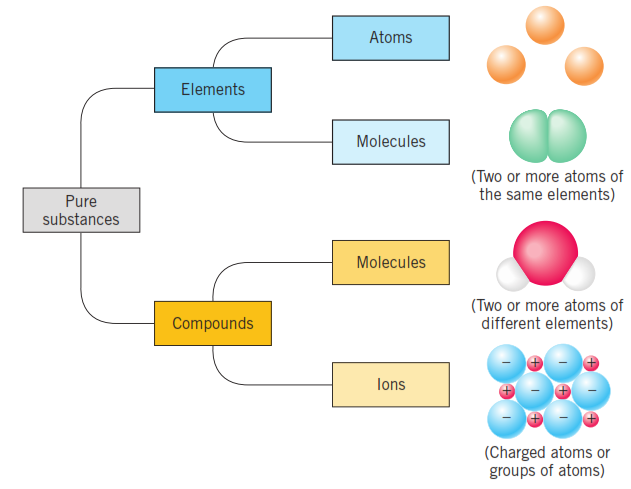Structure of Matter (Chemistry 1) 2023/2024 (G05.G08.G09.G16.G20.G27)
Topic outline
-

-
Forum
-
-
History of the Discovery of the Structure of Matter:
The concept of matter being composed of fundamental building blocks stretches back centuries, with significant advancements occurring throughout history. Here's a timeline of key discoveries:
5th Century BCE :
Leucippus and Democritus: Proposed the "atomos," an indivisible particle, as the foundation of all matter.
17th Century :
Robert Boyle : Advocated for the atomic theory and distinguished between element and compound.
18th Century :
John Dalton : Developed the modern atomic theory, proposing that elements are composed of tiny, identical atoms and that chemical reactions involve the rearrangement of atoms.
19th Century :
Joseph John Thomson : Discovered the electron, proving atoms were not indivisible and proposing the "plum pudding" model, with electrons embedded in a positively charged "pudding."
Marie and Pierre Curie : Discovered radioactivity, revealing the instability of atomic nuclei.
Ernest Rutherford : Conducted the gold foil experiment, demonstrating that the positive charge of an atom is concentrated in a dense core called the nucleus, with electrons orbiting around it.
Niels Bohr : Proposed the planetary model of the atom, with electrons in specific energy levels around the nucleus.
20th Century :
Erwin Schrödinger and Werner Heisenberg : Developed the quantum mechanical model of the atom, describing electrons as probability waves rather than particles in defined orbits.
James Chadwick : Discovered the neutron, providing a complete picture of the atomic nucleus composed of protons and neutrons.
21st Century :
Ongoing research continues to refine our understanding of the atom, including investigations into subatomic particles and the structure of the nucleus.
Additional key figures :
Galileo Galilei : His observations of the motion of objects laid the groundwork for understanding the behavior of atoms.
Isaac Newton : Developed the laws of motion and universal gravitation, which helped explain the forces acting on atoms.
Antoine Lavoisier : Established the law of conservation of mass, demonstrating that atoms are not created or destroyed in chemical reactions.
Albert Einstein : Developed the theory of relativity, which revolutionized our understanding of space, time, and energy at the atomic level.
This is a simplified overview of the vast history of the discovery of the structure of matter. Each of these discoveries built upon and challenged previous models, leading us to the ever-evolving understanding of the fundamental building blocks of our universe.

-

-
Opened: Friday, 22 December 2023, 8:00 AMClosed: Friday, 22 December 2023, 6:00 PM
-











